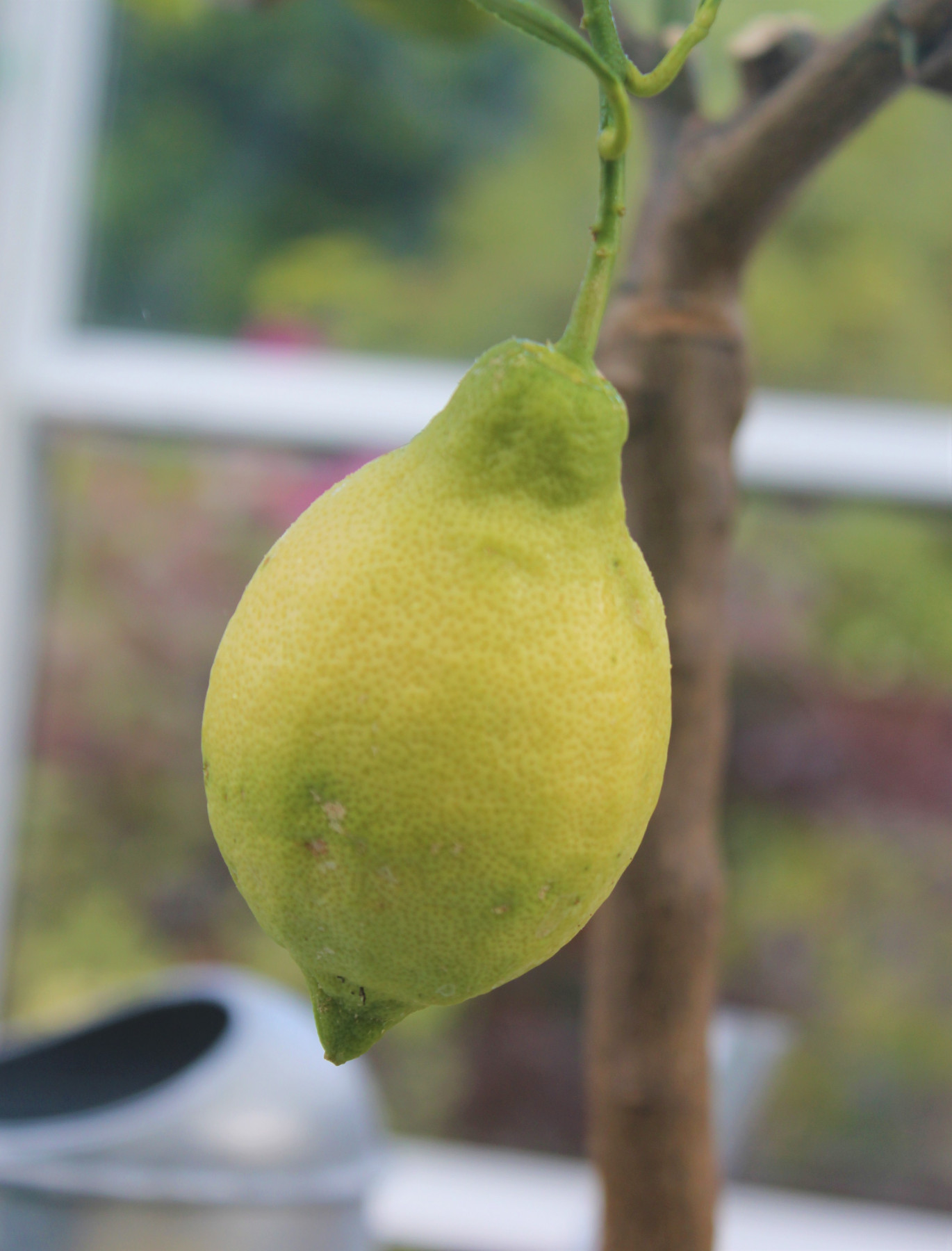
The weather has been strange this spring, with low temperatures and chilling winds, punctuated by hot days. Gardeners are used to erratic conditions, for sure, but this spring has been very odd. One interesting feature is that drought and dry cold wind have meant the best slug free hostas in the garden for years and gooseberries free of powdery mildew. It has also reminded us yet again of the benefits of owning a greenhouse.
My lemon and Yuzu lime have remained inside the greenhouse. Although the latter is ideal for a sheltered, sunny, courtyard and will take frost down to -8C it has flowered noticeably better indoors. Once the weather warms, it will go outdoors against a west facing wall, to make more space in the greenhouse. I bought an unnamed Lemon cultivar last autumn which needed serious pruning to tidy it up in spring and will be re-shaped over the summer. (I bought it as a bargain, in an end of season sale) it will stay indoors to optimise growth and ripen its single lemon. Here’s to more, later!
As greenhouse tomatoes become established, remove the side shoots of ‘cordon’ varieties, leaving a single productive stem. Just snap them off with your finger and thumb. Keep them well fed and watered, particularly if they are in growing bags and the compost dries out rapidly. You may need to water twice a day – one large soaking often leads to water-logging. Erratic watering causes calcium deficiency, known as ‘blossom end rot’, when the end of the fruit furthest away from the stem, turns black. Aim to keep the compost constantly moist.
It is really important to check for pests and diseases as temperatures rise. Check the greenhouse daily for red spider mite, whitefly, scale and mealybug. Control them with biological controls or environmentally friendly sprays. Mist to raise humidity to control red spider mite, make sure that plants are not crowded and keep the glasshouse well ventilated. The most common biological controls are: Phytoseiulus persimilis for red spider mite; Encarsia formosa against whitefly, Steinernema feltiae for scale and Cryptolaemus montrouzieri to control mealybug.
Transplant Aubergines, peppers and chillies into pots one or two sizes larger as they grow. Wait until they have a good root system but before they become pot bound, finally transplanting into 23 cm pots or two per growing bag. Keep a bucket or bag of compost in the greenhouse so it is warm for transplanting. Pinch out the tips from the main stems of aubergines when they are 30-40cm tall. Stake or tie into supports as necessary.
Pinch out the growing tip of peppers and chillis when they are about 15cm to encourages branching and heavier cropping.
Aubergines and tomatoes can be pollinated by tapping the flowers, ideally when the pollen is dry on a bright sunny day. Allow five or six aubergines to form, on each plant.
It is still not too late to sow sweetcorn in recycled drinking cups with a drainage hole in the base. sow French and runner beans in root trainers and pumpkins in individual pots. Happy gardening. Matt










